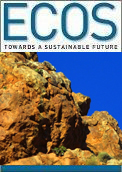
|
Published: 6 February 2012
Severe coastal storms linked to more deep-sea carbon
Spanish researchers have discovered the effects of coastal storms extend to the deep-sea environment and include increased carbon sequestration in this zone.
The research, published in the journal Public Library of Science ONE (PloS ONE) analysed data from a coastal storm that occurred in December 2008 in the Western Mediterranean Sea, the most extreme in the area over the last 25 years.
The research team, from Spain’s University of Barcelona, investigated the impact of the storm on sediment erosion, transport and deposition from the coast to the deep sea, and its implications for the organic carbon (OC) cycle.
They found the storm redistributed marine organic carbon from shallow to deep water through wave and current action. Sources of organic carbon included algae buried in seagrass meadows destroyed by the storm.
The findings indicate that increases in wind and wave intensity are likely to increase not only the amount of organic carbon deposited, but also its isolation from the atmosphere.
The deep-sea ecosystem is the largest and least-known ecosystem on earth. ‘The idea that the deep sea is permanently in calm conditions is false,’ says co-author Dr Anna Sanchez-Vidal. ‘There is a strong connection between atmospheric phenomena and the transfer of matter and energy to the deep sea.’
The researchers write that the results have ‘profound implications for the current understanding of deep-sea biology’.
‘In spite of their catastrophic effect on the coastal communities (or, more exactly, thanks to it), storms of high magnitude largely contribute to the sustainment of the deep ecosystem through the episodic supply of large volumes of marine OC mostly along submarine canyons.
‘This adds a new view to the current understanding on the impacts that climate-driven phenomena may have on deep-sea ecosystems, and consequently, on their living resources.’
Source: EurekAlert!/PLoS ONE




